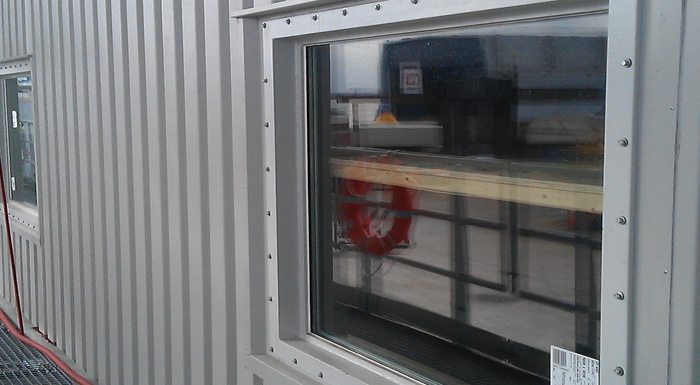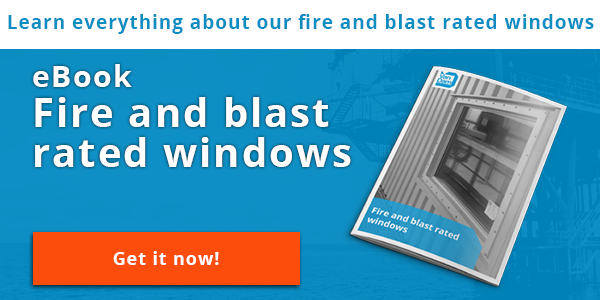
Architectural products on large structures, which operate onshore or offshore, have been evolved over the years to provide the highest standards in order to protect people and equipment.
The NORSOK standard C-002 explains in-depth and with great detail to which requirements architectural compounds should comply. In the standard, several necessary requirements are outlined for windows in the oil & gas industry.
1. General requirements for windows
The general requirements look at the overall requirements for windows. For example, window frames should be continuously welded to an external bulkhead or prefabricated walls. A bolted installation is possible if the project requires this.
To make sure that every window unit can be installed on various external wall thicknesses, they should have an adjustment capability in depth. Furthermore, by means of detailing between internal frame and cut-outs in internal linings, gaps between these items should be closed mechanically in order to stop passage of smoke and airborne noise.
It should also be made sure that maintenance, repair and replacement work on the glass can be carried out from the inside of the structure. Internal bolts of the frame are expected to be hidden behind an easily demountable profile system, which surrounds the complete window unit.
2. Environmental condition requirements for windows
Protection against environmental conditions depend on the location of the structure. Offshore structures face more stringent rules and regulations than onshore structures. In each location, the complete window unit should be able to withstand climate conditions, such as wind, icing, temperature, humidity, saliferous corrosion, etc. The windows are expected to ensure proper operation throughout the entire lifespan of the installation.
3. Glazing of windows
The glass should be hermetically sealed to the glazing compound. Within the layers, a minimum of 50% neutral colored, heat-reflecting layers should be included in the external window. This layer should be positioned on the inside of the outer glass.
The expansion movement of glass should be taken into consideration when sizing the glass units, in order to maintain the right performance requirements.
Furthermore, the forming of condensation between glass layers is absolutely unacceptable and should immediately be replaced!
4. Gasket and glazing compounds for windows
Since gaskets, sealants, setting blocks, spacers and shims are subjected to high levels of sun rays, they have to be designed of durable quality and have to have a high resistance against ultraviolet light. The grooved holding these gaskets should have good anchoring properties.
In order to guarantee stability and maintain adhesion to glass and metal, glazing compounds have to consist out of the best quality weather-resistant mastic.
5. Extra requirements for windows
There are also some extra requirement for windows according to the NORSOK standard. One of them is that windows should reduce sound by at least 48 dB. Furthermore, materials can be stainless steel AISI SS 316 L or mildsteel S 355 J2G3. And, the requirement for thermal transmittance is U < 1.5 W / m2C.
Conclusion
These are just a few requirements of the many which are included in NORSOK C-002. It is of significant necessity to understand what these requirements exactly are, why they are made and how they should be applied on each structure depending on various other conditions.
Download our eBook to get to know more about windows in the oil & gas industry.







